
Shrubs Around Las Vegas, Vegetation Around Las Vegas
 |
General: Longspine Horsebrush (Tetradymia axillaris) is an upright, spiny shrub growing 3- to 4-feet tall with often leafless, bright white stems. The stems are evenly covered in dense, matted, silvery hairs (tomentose). The leaves are in two forms: main leaves and clustered leaves. Main leaves are green and tomentose, but they look like long, thick spines. These leaves lose the hair and dry to become long, thin spines without hairs (glabrous). Clustered leaves look like regular leaves, but they are small, linear, fleshy, glabrous, and of course, occur in tight clusters. During spring and early summer, one or two yellow flowerheads are produced in leaf axils. Each flowerhead is composed of several disk flowers, but no ray flowers. Each flower produces many hairs that, when the entire plant is ripe, look like cotton or cotton balls stuck among the spiny twigs. Longspine Horsebrush is a fairly common component of shrub communities on well-drained sandy, gravelly, and rocky soils on upper bajadas and moderate slopes into the lower mountains in the Upper Sonoran (Mojave Desert Scrub and Pinyon-Juniper Woodland) life zone. Family: Sunflower (Asteraceae). |
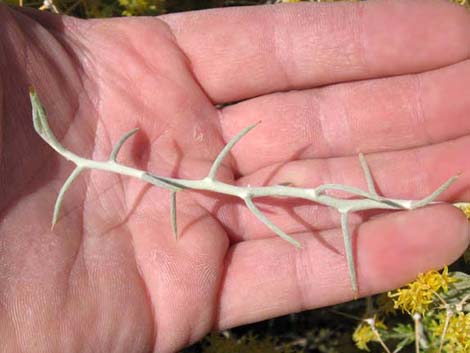 Main leaves linear, become spines with age |
Other Names: Cottonthorn, Horsebrush, Tetradymia Plant Form: Upright, drought deciduous shrub. Height: To about 4 feet. Bark: Silvery white (bright white due to tomentose hairs). Stems: Evenly tomentose. Stems tend to grow straight upright with straight, 1-inch main leaves (spines to be) that grow perpendicular to the stems. Spines hairless and more-or-less straight in age. Leaves: Two kinds of leaves: main and clustered. Main leaves (20-50 mm) grow on new stems and form the spines. Clustered leaves (2-12 mm) grow in axils. Clustered leaves are alternate, oblanceolate, green, and hairless. Flowers: Blooms spring through summer. Inflorescence: flowerheads with up to 7 disk flowers, yellow. |
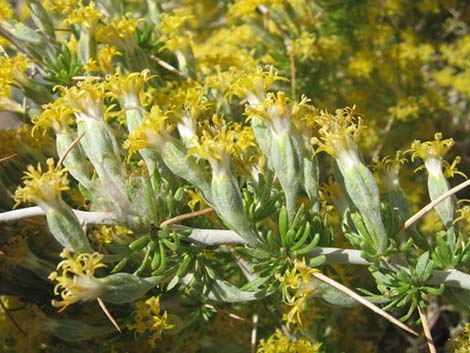 Flowers 1 or 2 per leaf axil |
Seeds: Fruits hairy. Tiny achene (like a tiny sunflower seed) with many fine bristles. Habitat: Dry, well-drained sandy, gravelly, and rocky soils on upper bajadas and moderate slopes in the lower mountains. Elevation: About 3,000 to 4,500 feet. Distribution: Southern California deserts and southern Nevada, plus extreme SW corner of Utah and NW corner of Arizona. Comments: There are two varieties: T. a. axillaris with flowerheads glabrous and T. a. longispina with flowerheads tomentose. |
 |
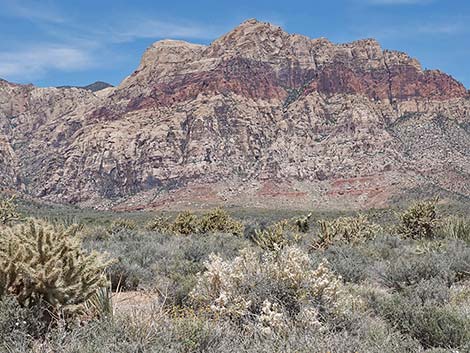 |
 |
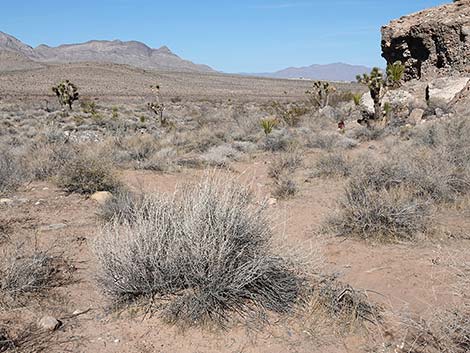 |
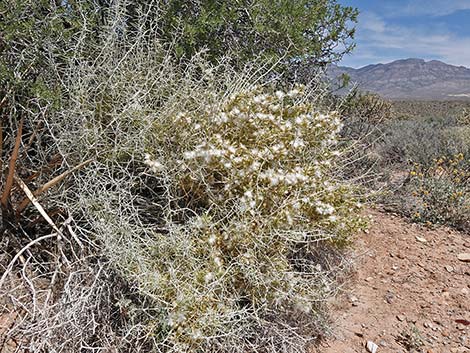 |
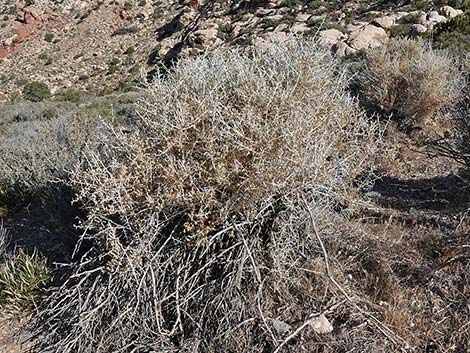 |
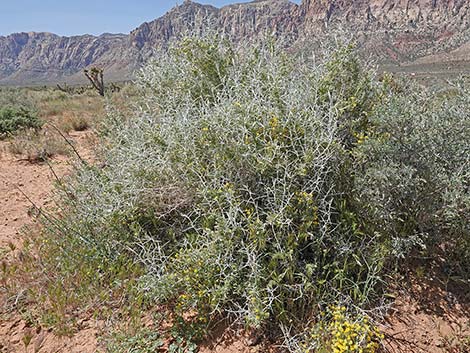 |
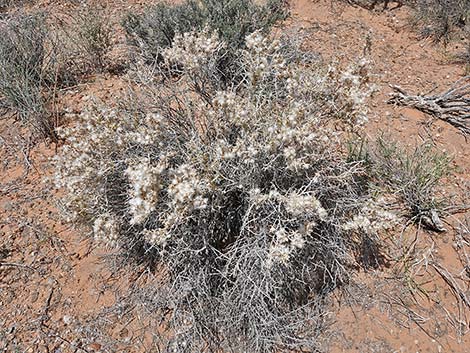 |
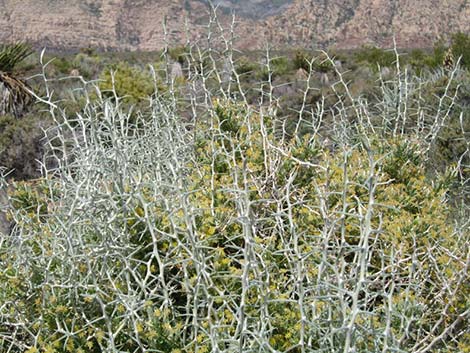 |
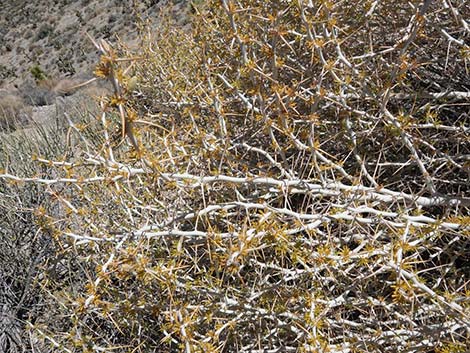 |
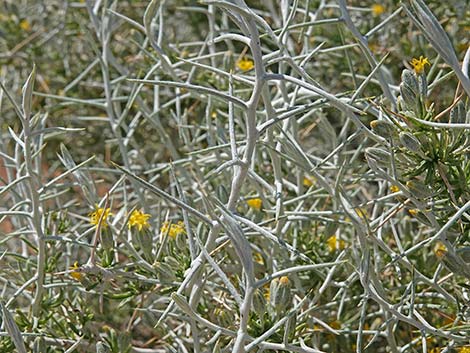 Main leaves show green when growing, but covered in white hairs |
 Main leaves show green when growing, but covered in white hairs |
 Main leaves become stiff, but still covered in white hairs |
 Main leaves show green when growing, but covered in white hairs |
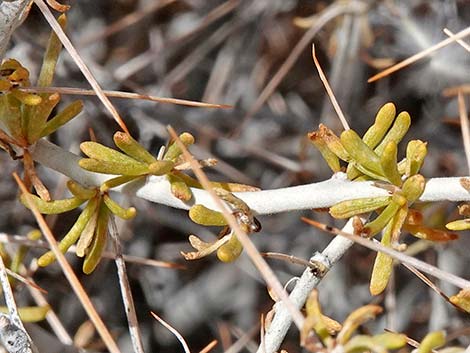 Clustered leaves without hairs; note spines lose the white hair with age |
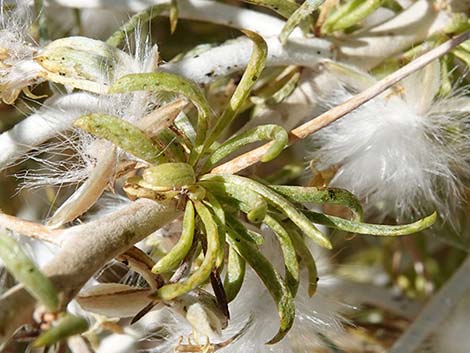 Clustered leaves without hairs; note spines lose the white hair with age |
 Flowers 1 or 2 per leaf axil |
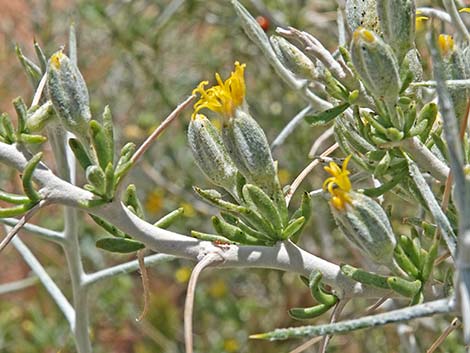 Flowers 1 or 2 per leaf axil |
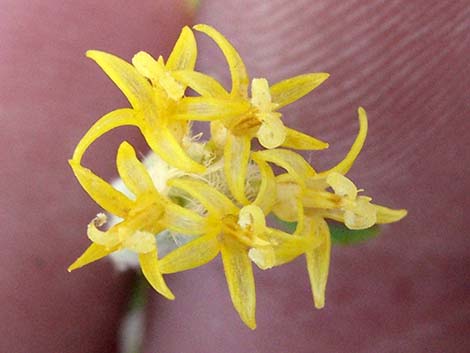 Individual "flower " composed of several disk flowers |
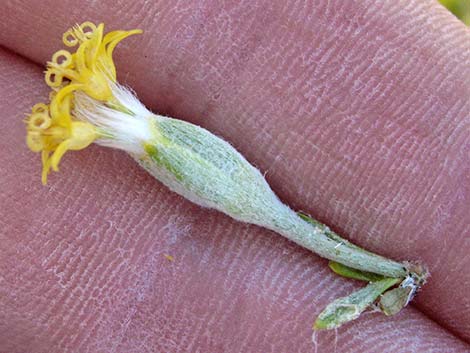 Individual "flower" |
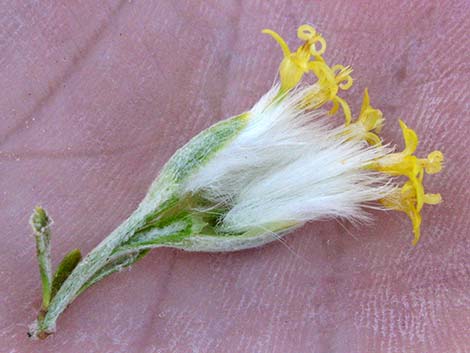 Individual "flower" dissected to show presence of bristles |
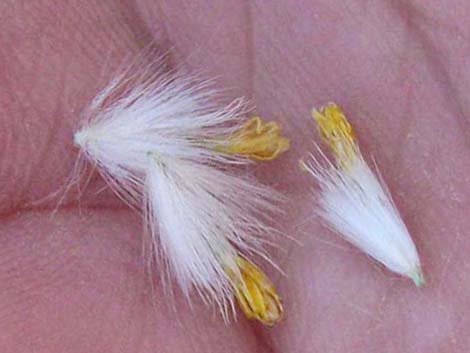 Three individual disk flowers with bristles |
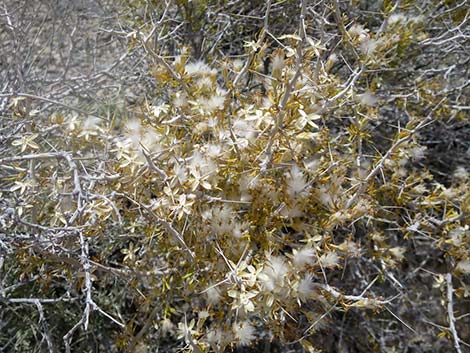 |
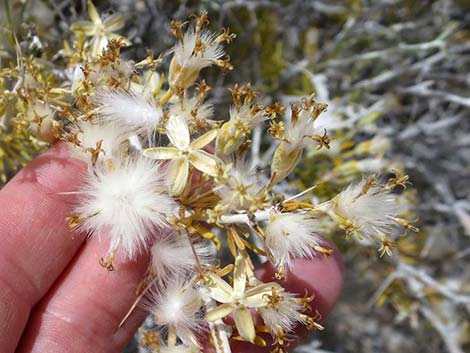 |
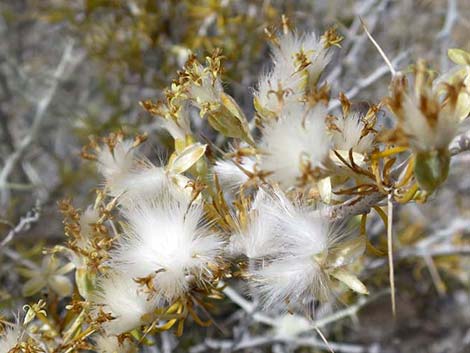 |
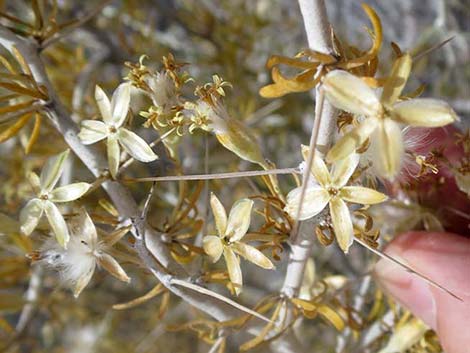 |
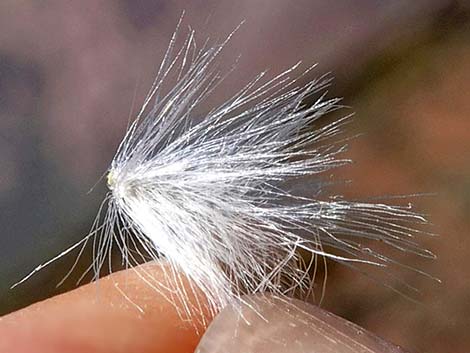 Ripe seed with bristles |
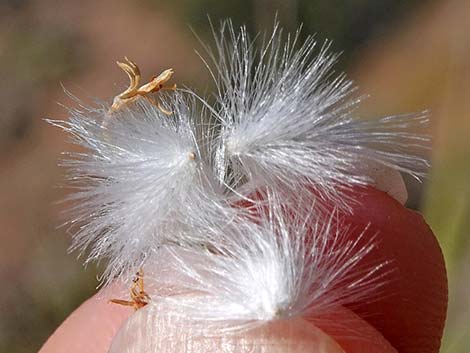 Ripe seeds with bristles |
 Seeds can be so numerous that they pile up on the ground |
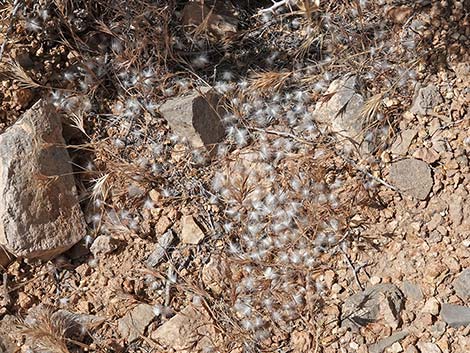 Seeds can be so numerous that they pile up on the ground |
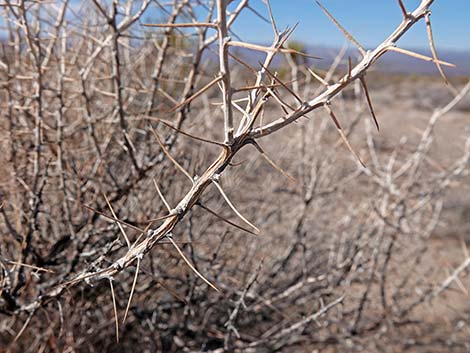 During winter, only stems with long, hairless spines |
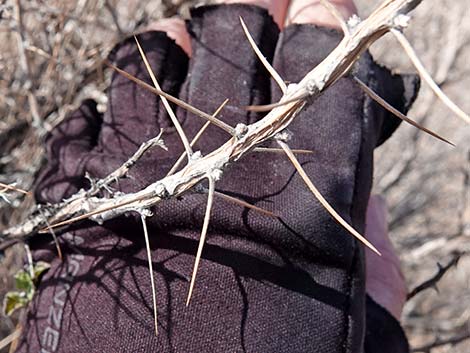 During winter, only stems with long, hairless spines |
Note: All distances, elevations, and other facts are approximate. Names generally follow the USDA database.
![]() ; Last updated 240728
; Last updated 240728
| All Shrubs | Plant Species Index | Glossary | Copyright, Conditions, Disclaimer | Home |